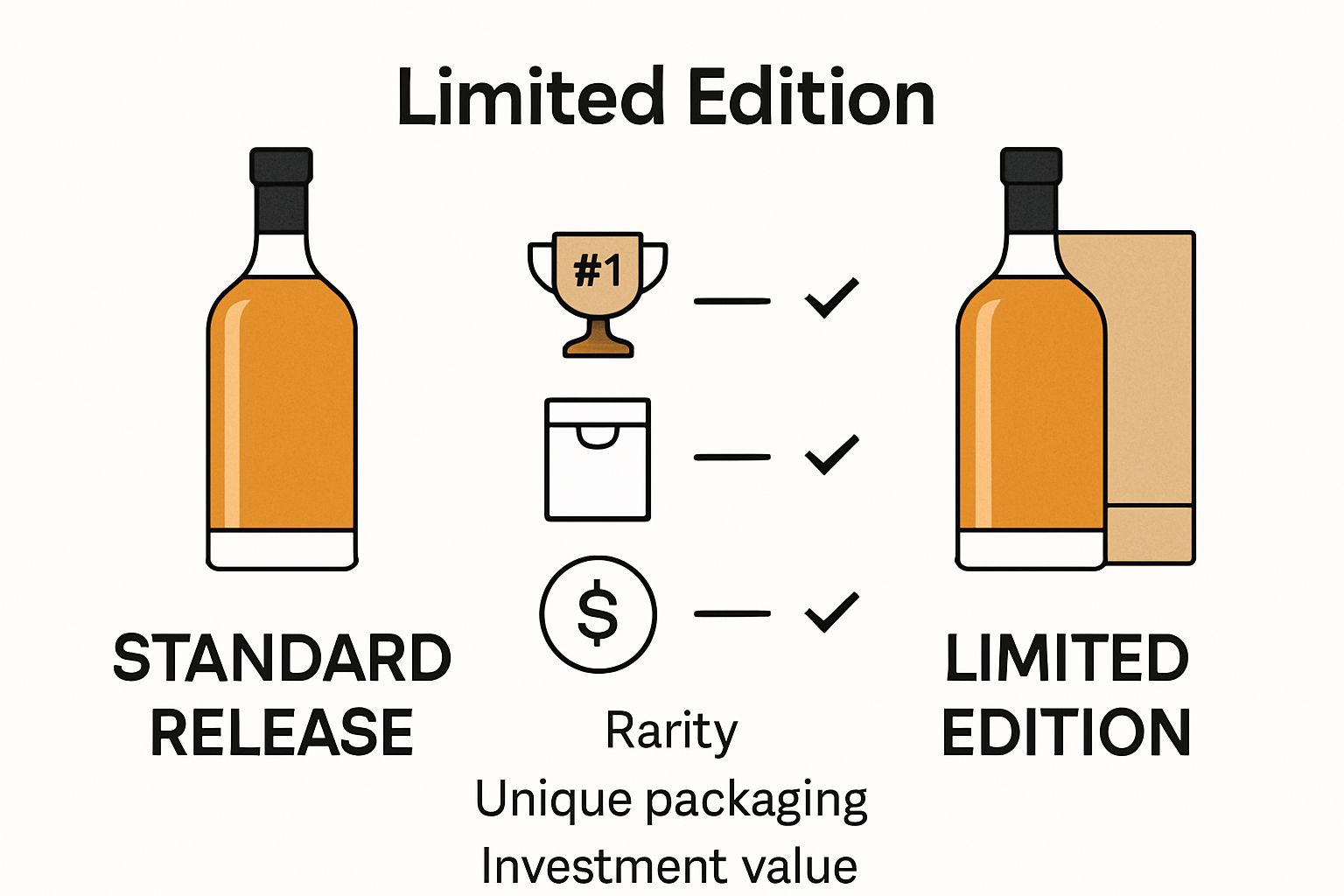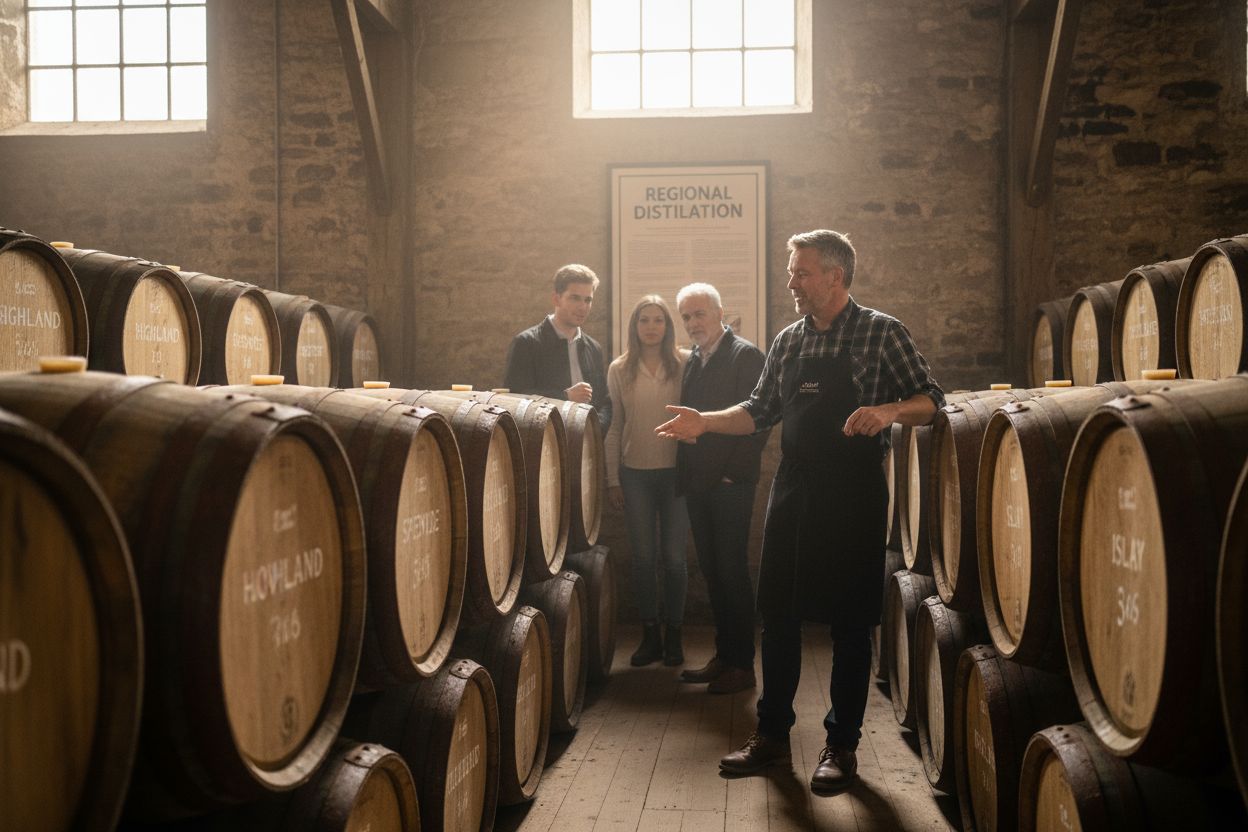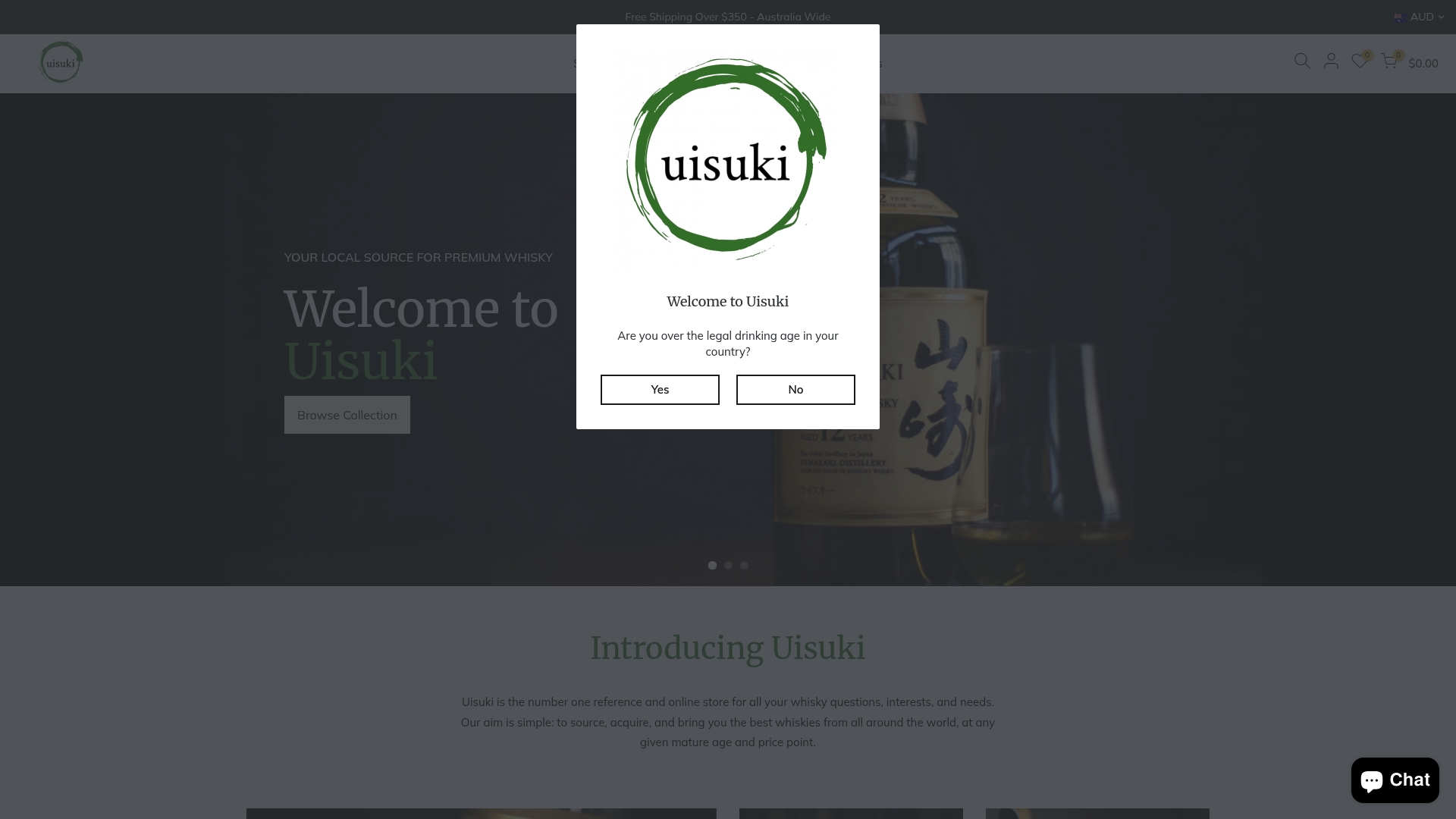Whisky prices can seem all over the shop and some bottles fetch eye-watering sums you might not expect. There are blends on the shelf for under a hundred bucks, while a rare single malt can pull in tens of thousands. But here’s the real kicker. Some limited edition whiskies make up less than 5 percent of a distillery’s annual production, and that tiny slice is often what collectors chase the hardest and pay the most for. The real story behind those price tags has less to do with taste and more to do with time, tradition, and a bit of clever marketing.
Table of Contents
- The Basics Of Whisky Pricing: What Influences Cost?
- The Role Of Production Methods In Price Variation
- Understanding Market Demand And Its Impact On Prices
- Limited Editions And Rarity: Why They Command Higher Prices
- The Influence Of Regional Distillation Practices On Value
Quick Summary
| Takeaway | Explanation |
|---|---|
| Quality of raw materials drives prices | Premium grains from specific regions increase whisky production costs, affecting final pricing. |
| Aging enhances whisky value | Longer maturation periods require significant investment and add complexity, justifying higher prices. |
| Collector demand influences pricing | Limited editions, historical significance, and scarcity can substantially increase values in the collector’s market. |
| Production methods affect costs | Traditional distillation techniques and barrel selection can significantly elevate both quality and price of whisky. |
| Regional practices shape whisky uniqueness | Geographic origin and local traditions often create distinct flavours and pricing premiums based on reputation. |
The Basics of Whisky Pricing: What Influences Cost?
Understanding why whisky prices vary requires examining multiple complex factors that contribute to a bottle’s final value. Unlike other consumer products, whisky pricing reflects an intricate combination of production techniques, historical reputation, and market dynamics.
Raw Material Quality and Production Complexity
The fundamental foundation of whisky pricing begins with raw ingredients. Premium whiskies start with exceptional grains typically sourced from specific regions. Research from Britannica indicates that the quality of barley, wheat, or corn significantly impacts production costs. Distilleries investing in high-grade grains inevitably transfer those expenses into pricing.
Key factors influencing raw material costs include:
- Geographic origin of grains
- Agricultural cultivation methods
- Organic or traditional farming practices
- Specific varietal characteristics
Aging and Maturation Process
The aging process represents another critical element determining whisky prices. Longer maturation periods require substantial financial investment from distilleries. Warehousing, monitoring, and potential product loss through evaporation (known as the “angel’s share”) incrementally increase production expenses.
Whiskies aged 12 years or more command premium prices because they represent significant time and resource commitment. Learn more about whisky varieties to understand how aging impacts flavour complexity and market value.
Rarity and Collector’s Market Dynamics
Beyond production considerations, whisky pricing incorporates collector’s market dynamics. Limited edition releases, discontinued vintages, and bottles from renowned distilleries can dramatically escalate market value. Collectors and enthusiasts frequently drive prices based on perceived historical significance and scarcity.
Understanding these nuanced pricing mechanisms helps whisky lovers appreciate why some bottles cost significantly more than others. The interplay of production quality, aging duration, and market demand creates a sophisticated pricing ecosystem that continues to fascinate both casual drinkers and serious collectors.
The Role of Production Methods in Price Variation
Production methods represent a pivotal factor in determining whisky pricing, with each distillery employing unique techniques that significantly influence the final product’s value. The intricate craft of whisky making involves numerous variables that can dramatically impact both quality and cost.
Distillation Techniques and Equipment
The distillation process stands as a critical determinant of whisky pricing. Traditional copper pot stills, which are more expensive and labour-intensive, produce smaller batches with more nuanced flavour profiles. According to research from the Scottish Whisky Association, artisanal distillation methods can increase production costs by up to 40% compared to industrial approaches.
Key considerations in distillation include:
- Type of still used (copper pot vs column)
- Heating method
- Number of distillation passes
- Skilled labour requirements
- Precision of temperature control
Barrel Selection and Maturation Environment
Whisky maturation represents another crucial production element affecting pricing. The selection of oak barrels plays a fundamental role in developing complex flavour characteristics. Specialty barrels previously used for wine, sherry, or bourbon can exponentially increase a whisky’s market value.
Environmental factors during maturation such as warehouse location, humidity, and temperature create unique flavour profiles that collectors and enthusiasts value. Explore our guide on whisky varieties to understand how these nuanced production methods contribute to pricing.
Craftsmanship and Artisan Approaches
Artisan distilleries often command higher prices due to their commitment to traditional craftsmanship. Small-batch production, hand-selected ingredients, and meticulous quality control processes contribute to elevated pricing. These producers invest significant time and expertise into creating distinctive whisky expressions that stand apart from mass-produced alternatives.
Understanding the intricate relationship between production methods and pricing reveals why some whiskies cost significantly more than others. The combination of technical skill, traditional techniques, and innovative approaches creates a complex pricing landscape that rewards exceptional craftsmanship.
The table below compares how various whisky production methods, as described in the article, influence both cost and final product quality.
| Production Method | Impact on Cost | Effect on Quality and Value |
|---|---|---|
| Copper Pot Stills | Higher due to labour and equipment | More nuanced and characterful flavour profiles |
| Column Stills | Lower as they are industrially efficient | Cleaner spirit, but often less complexity |
| Specialist Barrel Selection (Wine, Sherry, etc) | Significantly increased by rare barrels | Adds unique flavours; boosts both collectability and price |
| Small Batch / Artisan Craftsmanship | Elevated due to manual labour | Greater uniqueness; commands premium pricing |
| Traditional vs. Modern Techniques | Traditional methods costlier | Tradition appreciated by enthusiasts, often linked to higher value |
Understanding Market Demand and Its Impact on Prices
Market demand represents a critical driver in whisky pricing, creating complex dynamics that extend far beyond simple production costs. The global whisky market operates as a sophisticated ecosystem where consumer preferences, collectibility, and regional trends dramatically influence bottle values.
Global Consumption Patterns
Consumer demand varies significantly across different regions and demographics. According to research from the OECD, global whisky consumption patterns demonstrate substantial variability, directly impacting pricing strategies. Emerging markets like Asia have shown exponential growth in premium whisky interest, which substantially elevates pricing for certain expressions.
Significant market demand factors include:
- Regional drinking preferences
- Cultural significance of whisky
- Economic purchasing power
- Generational consumption trends
- Emerging collector markets
Collector and Investment Markets
The whisky market increasingly functions as an alternative investment platform. Rare and limited edition bottles attract significant speculative interest, creating secondary markets where pricing becomes disconnected from original production costs. Collector enthusiasm can transform an ordinary bottle into a valuable asset.
Explore our guide on whisky varieties to understand how collectibility influences market valuation. Bottles from closed distilleries, anniversary editions, and unique cask finishes often command extraordinary premiums.
Brand Reputation and Scarcity Dynamics
Whisky brands with established international reputations can command premium pricing based on perceived quality and historical significance. Limited production runs, especially from renowned distilleries, create artificial scarcity that drives collector interest and increases market values.
Understanding these market demand mechanisms reveals the intricate relationship between consumer perception, historical reputation, and pricing. The whisky market continues to evolve, with collectors and enthusiasts playing a crucial role in determining bottle values beyond traditional economic models.
Limited Editions and Rarity: Why They Command Higher Prices
Limited edition whiskies represent a fascinating intersection of craftsmanship, marketing, and collector psychology. These exclusive releases transcend traditional product offerings, transforming bottles into coveted cultural artifacts that attract serious enthusiasts and investors alike.
Characteristics of Limited Edition Releases
Limited edition whiskies distinguish themselves through exceptional uniqueness and restricted availability. According to research from Whisky Advocate, these special releases typically represent less than 5% of a distillery’s annual production, instantly elevating their perceived value.
Key characteristics of limited edition whiskies include:

- Extremely restricted production numbers
- Unique cask or finishing techniques
- Special commemorative packaging
- Distinctive flavor profiles
- Numbered or individually authenticated bottles
Collector and Investment Dynamics
The secondary market for rare whiskies has transformed these bottles from consumable beverages into legitimate investment assets. Collectors and investors track limited editions with the same intensity financial traders monitor stocks. Rare releases can appreciate significantly, with some bottles increasing in value by hundreds of percentage points within years of release.
Learn more about whisky varieties to understand the intricate world of collectible spirits. Bottles from discontinued distilleries or marking significant milestones often become particularly prized.
Storytelling and Brand Mythology
Successful limited editions leverage powerful narrative strategies. Distilleries craft compelling stories around these releases, connecting them to historical moments, unique production techniques, or exceptional craftsmanship. This storytelling transforms a simple bottle into a narrative experience that resonates with collectors.
Understanding limited edition pricing requires recognizing that value extends far beyond liquid contents. These releases represent a complex interplay of scarcity, craftsmanship, and cultural significance that continues to fascinate whisky enthusiasts worldwide.
The Influence of Regional Distillation Practices on Value
Regional distillation practices represent a profound determinant of whisky pricing, with geographic traditions creating unique production methodologies that significantly impact bottle value. Each whisky-producing region brings distinctive characteristics that transform basic ingredients into extraordinary spirits.
Terroir and Local Production Characteristics
Geographical origin plays a critical role in whisky valuation. According to research from Britannica, local environmental conditions including water source, climate, and grain varieties fundamentally shape whisky character. Scottish Highland whiskies differ dramatically from Lowland productions, with these regional distinctions directly influencing market perception and pricing.
Key regional production factors include:
- Local water mineral composition
- Indigenous grain varieties
- Traditional fermentation techniques
- Historical distillation equipment
- Specific environmental microclimates
Historical Reputation and Cultural Significance
Some regions have developed international reputations that exponentially increase whisky values. Scottish single malts, Japanese precision distillation, and American bourbon traditions each carry profound cultural cachet that transforms pricing dynamics. Regional expertise becomes a marketable brand attribute that collectors and enthusiasts eagerly pursue.
Explore our guide on whisky varieties to understand how geographic traditions create unique flavor profiles and market values.
Innovation Within Traditional Frameworks
Modern distilleries increasingly leverage regional traditions while introducing innovative techniques. This delicate balance between respecting historical practices and embracing contemporary production methods creates exciting market opportunities. Regions that successfully blend tradition with innovation often command premium pricing for their distinctive expressions.
Understanding regional distillation practices reveals whisky as more than a beverage—it represents a complex cultural product where geography, tradition, and craftsmanship converge to create extraordinary value.

Ready to Explore What Drives Real Whisky Value?
Have you ever wondered why your favourite bottles carry such different price tags? As covered in our article, whisky prices are shaped by complex factors like rare ingredients, lengthy ageing, innovative production methods, and worldwide demand. For many collectors and enthusiasts, this can make hunting for quality or rare finds frustrating, especially if you do not know where to start or how to spot true value. If you are looking for clarity—or you want expert support with your next purchase—let us help you turn that uncertainty into confidence.

Start discovering bottles that reflect all the quality, rarity and regional expertise highlighted in our article by browsing the curated range at Uisuki.com.au. Our platform collects Scotch, Japanese, Australian and American releases with new arrivals and hard-to-find gems featured regularly. If you have a particular interest or are seeking something truly unique, send a personalised sourcing request and our experts will guide you to the right choice. Visit Uisuki.com.au now to access a world of whisky expertise and rare editions before they are gone.
Frequently Asked Questions
What factors influence whisky pricing?
Understanding whisky pricing involves considering several key factors, including the quality of raw materials, aging and maturation processes, production methods, market demand, and collector dynamics. Each aspect contributes to the intricate ecosystem of whisky values.
How does aging affect the price of whisky?
Longer aging periods typically lead to higher prices due to the costs associated with warehousing, storage, and potential evaporation losses during maturation. Whiskies aged for 12 years or more are generally more expensive because of the substantial time and resources invested in their production.
What role do limited edition releases play in whisky pricing?
Limited edition whiskies often command higher prices due to their scarcity, unique production techniques, and collector interest. These special releases can represent less than 5% of a distillery’s annual production, significantly elevating their perceived value among enthusiasts.
To help readers clearly understand the unique traits that set limited edition whiskies apart, the following table outlines their main characteristics as discussed in the article.
| Characteristic | Description |
|---|---|
| Restricted Production Numbers | Produced in extremely small batches, often less than 5% of a distillery’s annual output |
| Unique Cask or Finishing Techniques | Utilise special barrels or maturation processes to create one-of-a-kind flavour profiles |
| Special Commemorative Packaging | Released with bespoke labelling, boxes, or bottle designs marking their exclusivity |
| Distinctive Flavour Profiles | Each release aims for a particular character or taste experience not found in core ranges |
| Numbered or Authenticated Bottles | Bottles are individually numbered or certified to verify authenticity and rarity |
How do production methods impact whisky costs?
Production methods, including distillation techniques, barrel selection, and craftsmanship, affect whisky pricing. Artisanal distillation and the use of high-quality barrels can increase production costs, which are then reflected in the final sale price of the whisky.

